On a Scottish Island
My wife's family have the lease for a 19th century cottage on a small, otherwise uninhabited, Scottish island. Every year, since Mary and I first became an item, I have returned to the island for an off-the-grid retreat of rest, recuperation and reflection.
There are two ways to get onto the island: by boat during high tide, or by walking over two miles of mudflats at low tide.
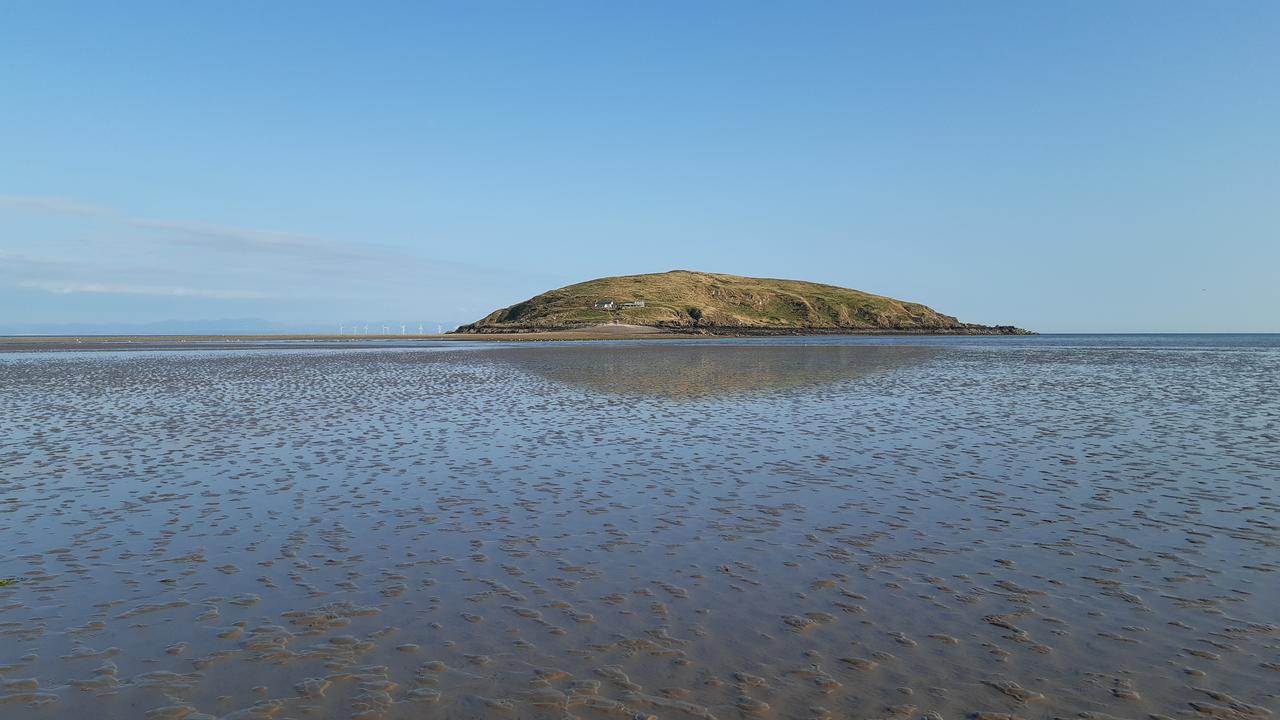
Renovating the cottage is my in-law's retirement project and, from time to time, we and other members of the extended family have helped in various ways (most recently my family and I carried more than 2000 slate tiles and other roofing material up the hill from the beach so the roof could be fully restored by a couple of friendly local builders).
It's a small traditional whitewashed cottage with two bedrooms, a sitting room, a kitchen and a bathroom. Running water is pumped into cisterns from an ancient well, there is no electricity except that provided intermittently by a generator and the bathroom is unplumbed with a compost toilet and wash basin.
Outside the cottage an old barn is used for storage and contains a sheltered outdoor room called the "Breeze Inn". In the garden are various home-made seats around a campfire, a vegetable plot and, to one side, an improvised "hot tub" made from a large ancient Victorian bath (what a wonderful view!). A fence secures the property from the island's only other occupants: a herd of sheep.
We're free to roam and, while the island is not very big, it offers a remarkable number of things to do.
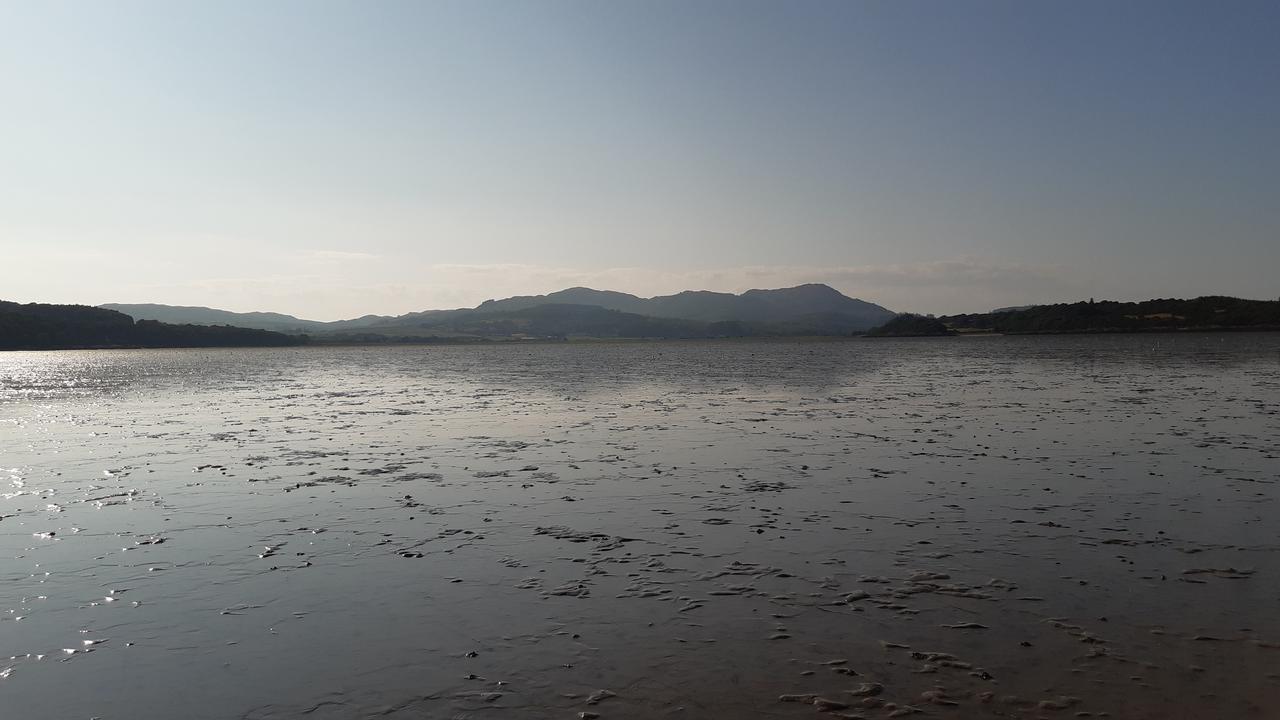
The first thing to do, as always, is to get to the island.
This year we walked the mudflats and carried our clothes, sleeping bags and a generous number of books in rucksacks. This has always felt to me like a ritual of transformation: by crossing the mud we're leaving the real world and all its interruptions, demands and busy-ness and arriving in a sanctuary of calm, a refuge for reflection and an undisturbed natural space.
Walking the mudflats allows me to exercise more than just my legs. My senses are stimulated too. The short walk from the car park to the slipway is along a verdant tree-lined dappled road. We're accompanied by the distant laughter of gulls, the piping of oyster catchers and bubbling whistle of curlews. The air is full of the smell of sweet honeysuckle with an undercurrent of the salty twang of seaweed. Once barefoot on the mudflats, walking is a warm, wet, rhythmic sensation that feels like a gentle massage.
Sometimes we talk.
Sometimes we sing.
Often we just lose ourselves in silent reflection.
It feels important to take in this liminal time: a threshold and transitory in-between space for adjusting to and from island life.
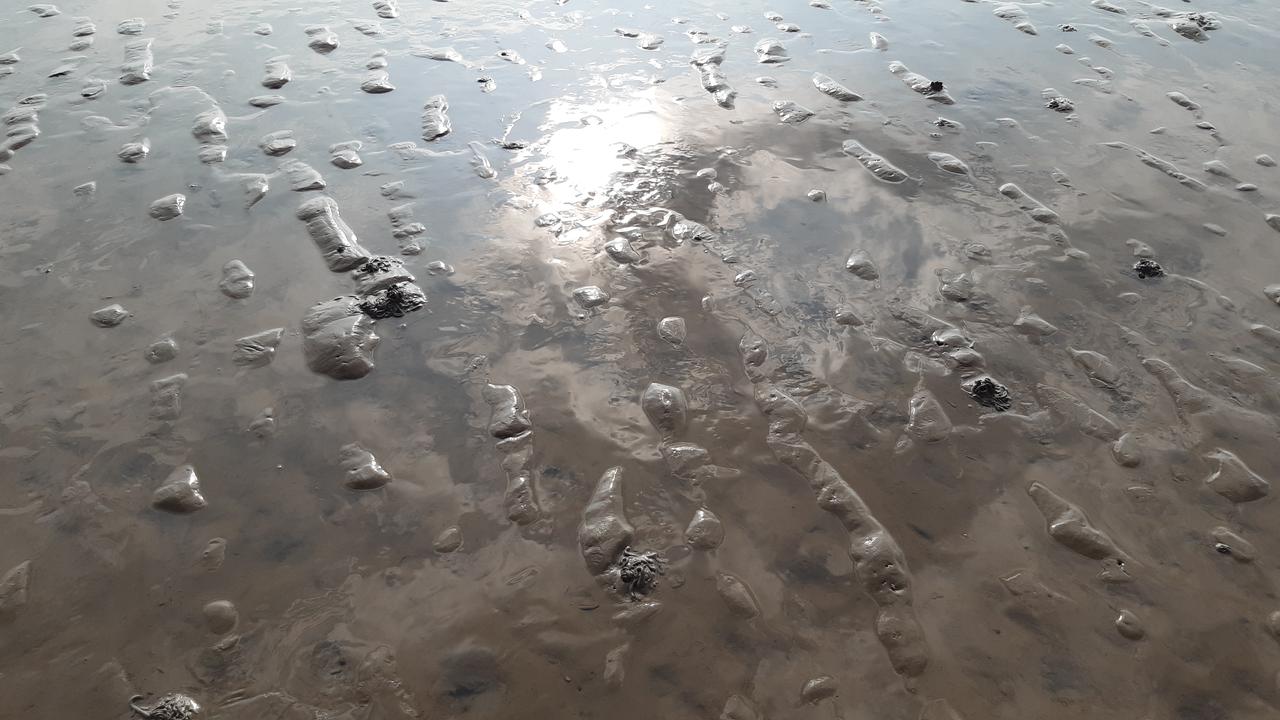
The mudflats are not only (literally) a place of reflection, but also an active and dynamic world. Birds swoop in to explore the gifts swept in by the tide and we're not the only ones making journeys: if you look closely, winkles make tracks over a lunar like landscape.
Who knows where they're off to..?
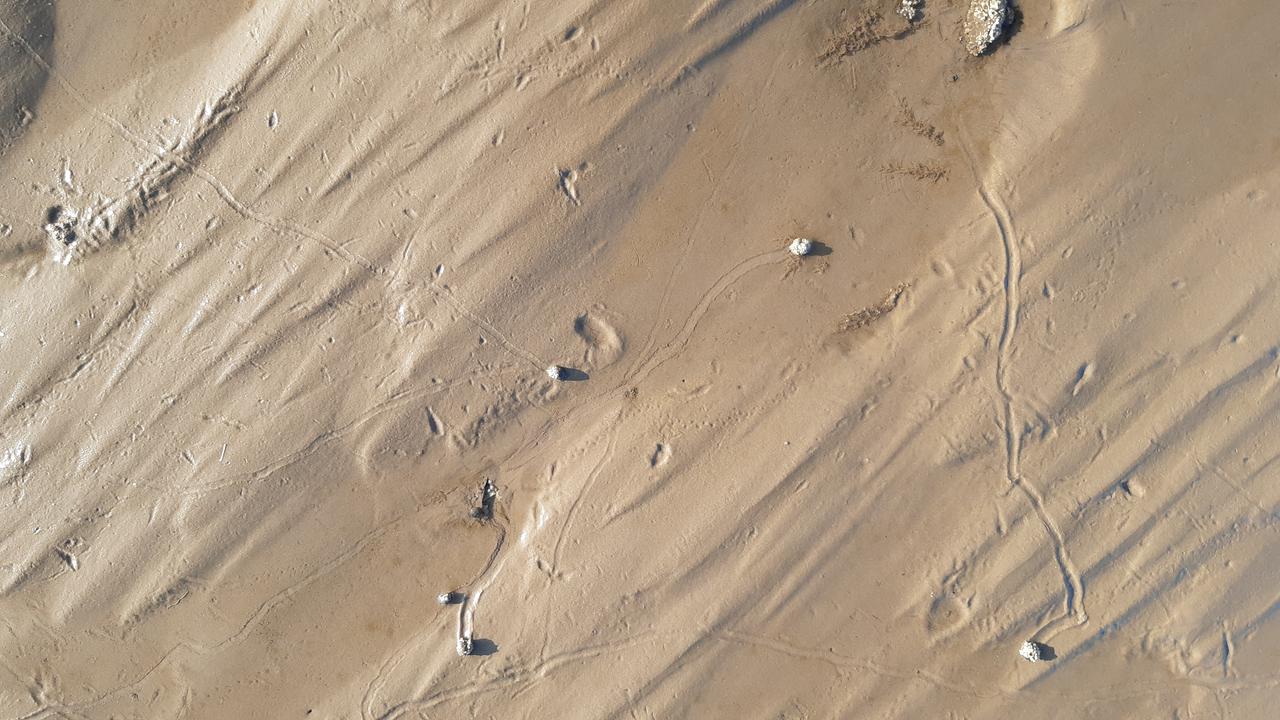
At the end of the mudflats is a long mussel bed called the "rack". Sliding into sandals protects feet from the sharp rocks and mussels that crackle and pop when trodden on. To the west of the rack are some medieval fish pools constructed by monks from a nearby abbey. Apparently they used the island as a hermitage.
When the tide is in and the rack is submerged, we're isolated from the mainland and alone.
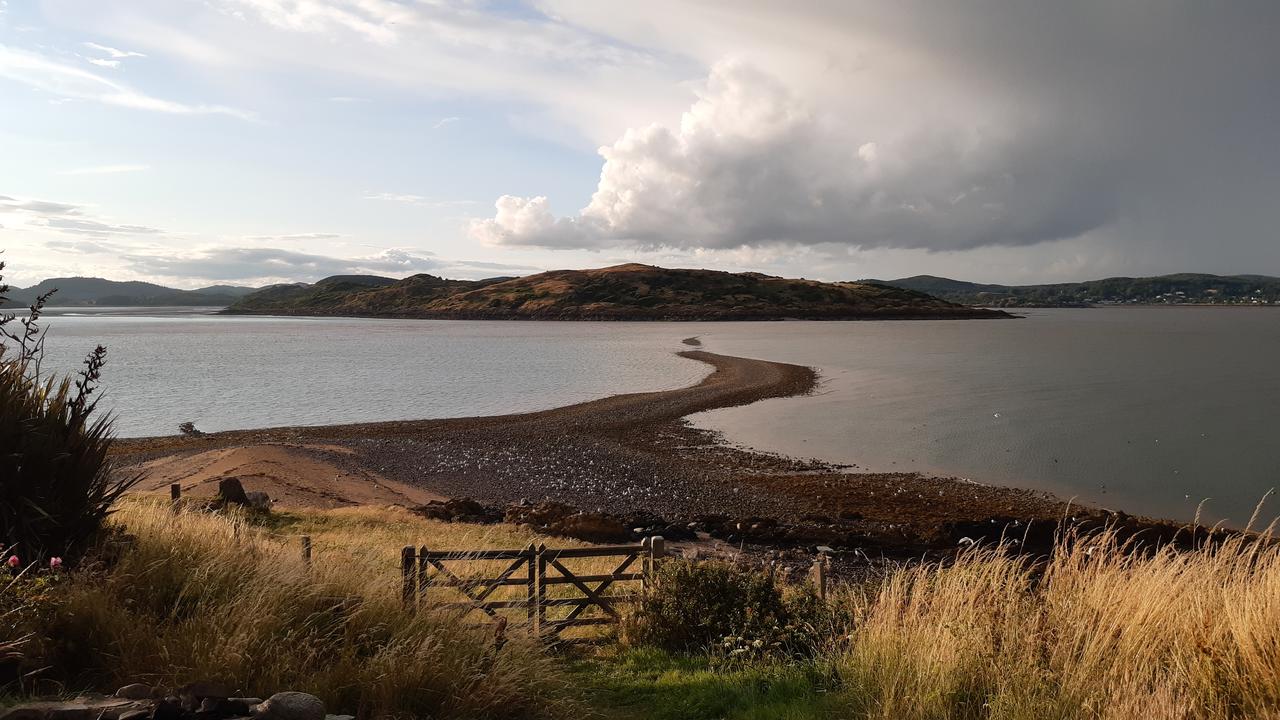
The tide and other natural rhythms of the place soon influence the pace of life.
The change of the tide is a barely perceptible but constant reminder that, as Heraclitus would put it, "everything flows" (πάντα ῥεῖ). Yet, while the tide is a rhythmic constant, each tide brings about a new world: new flotsam and jetsam emerge from the waves, the sea itself changes colour, tone and mood, and the shallow river on the mudflats changes course. Once again Heraclitus provides a suitably watery aphorism, "on those who enter the same rivers, ever different waters flow" (ποταμοῖσι τοῖσιν αὐτοῖσιν ἐμβαίνουσιν ἕτερα καὶ ἕτερα ὕδατα ἐπιρρεῖ).
Such a steady tempo of change in the external world leaves time and space to feel and observe changes within, reflect and simply be with oneself.
To help with this process I switch off my mobile phone and don't wear a watch ~ preferring to synchronise myself with the world through the ambient events of island life: passing boats, swimming in the sea, playing games, exploration of the island, reading and, of course, the weather.
The island has a microclimate. It might be raining torrents on the mainland, but the island is still bathed in sunshine. The sky is often a turbulent and dramatic looking place and another source of steady rhythmic change.
Often we're richly rewarded simply by looking up.
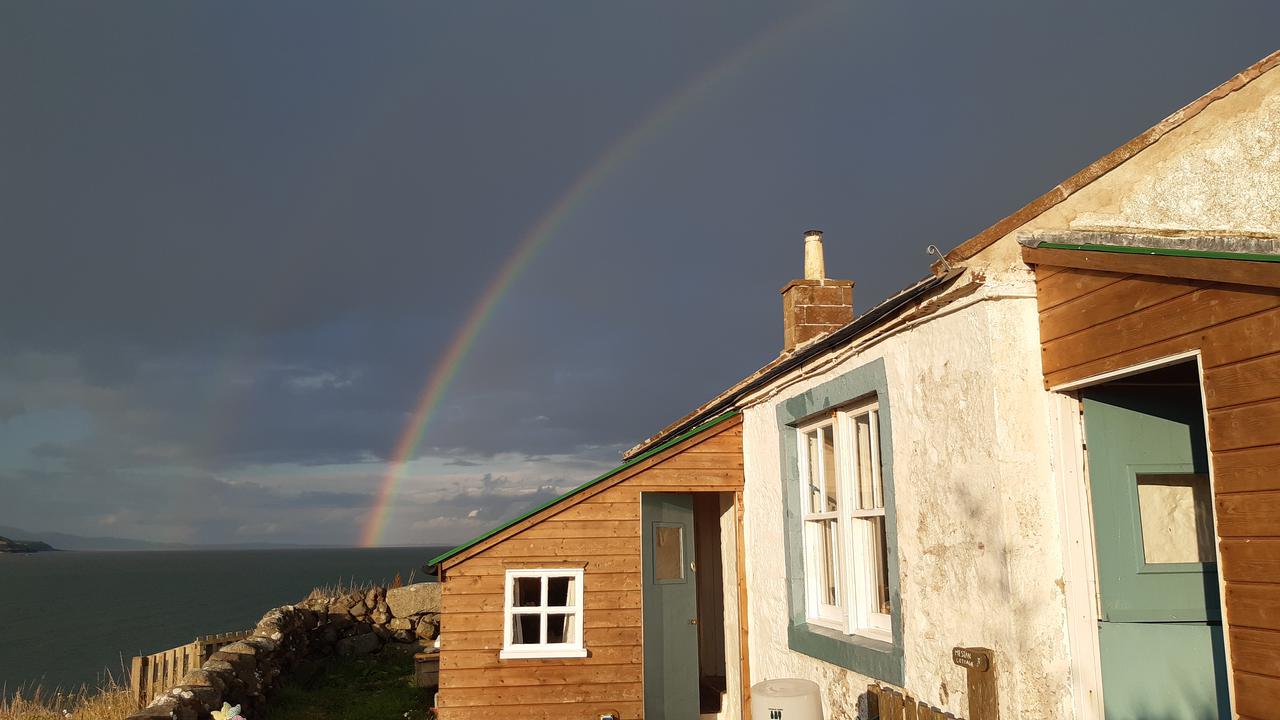
Of course, the sunrise and sunset always act as momentous cadences in the day. Everything feels like it is paying attention during these marvellous transitions. Memories of these times act as souvenirs to help recall the feeling of being on the island (especially when frustrated by life back on the mainland).
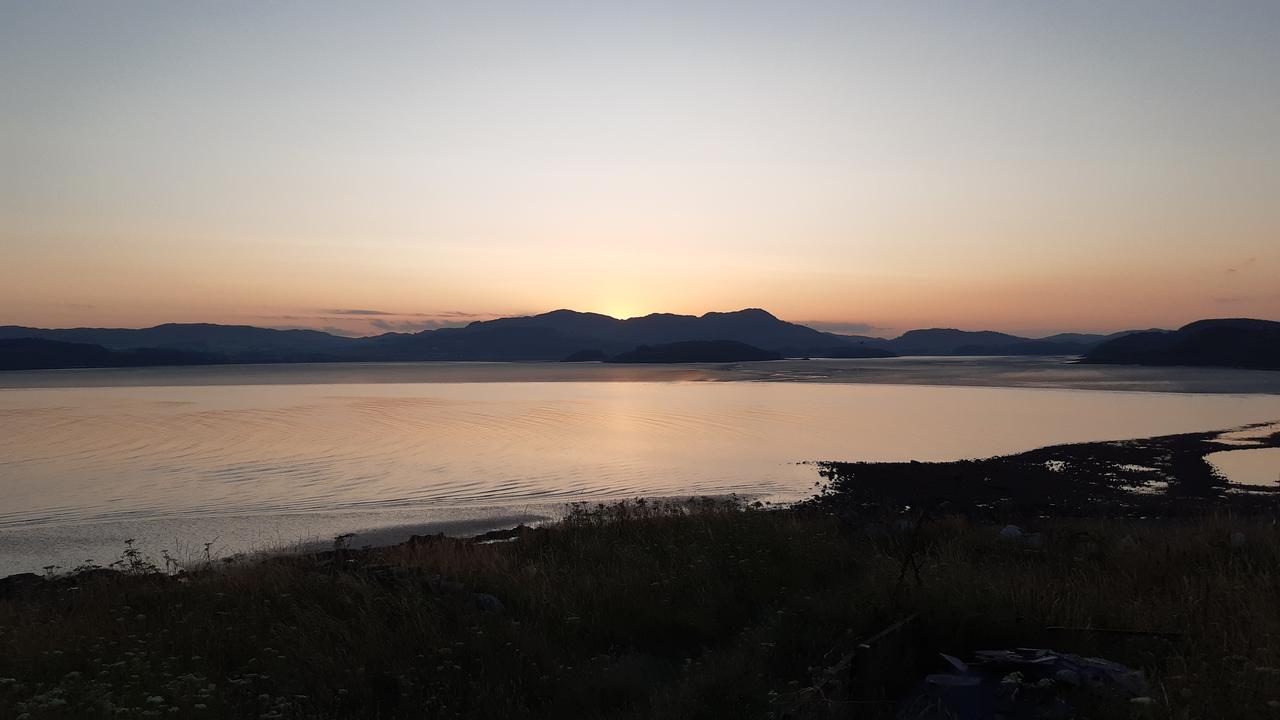
At the bottom of the hill, directly below the cottage is a sandy beach. We often swim there when the sea makes it safe to do so.
As a prominent sign in the cottage's kitchen declares, "by the sea, all worries wash away", and swimming in the sea is another way of immersing oneself in nature. It's certainly very cold, but this soon passes and you become sensitive to swells and waves while paying close attention to the depth or closeness of jellyfish.
Ultimately, it doesn't really matter how you occupy yourself on the island. As my father-in-law commented, "only the seagulls are here to complain, so don't worry". I'd add that seagulls always sound as if they're complaining, so it becomes very easy to ignore them!
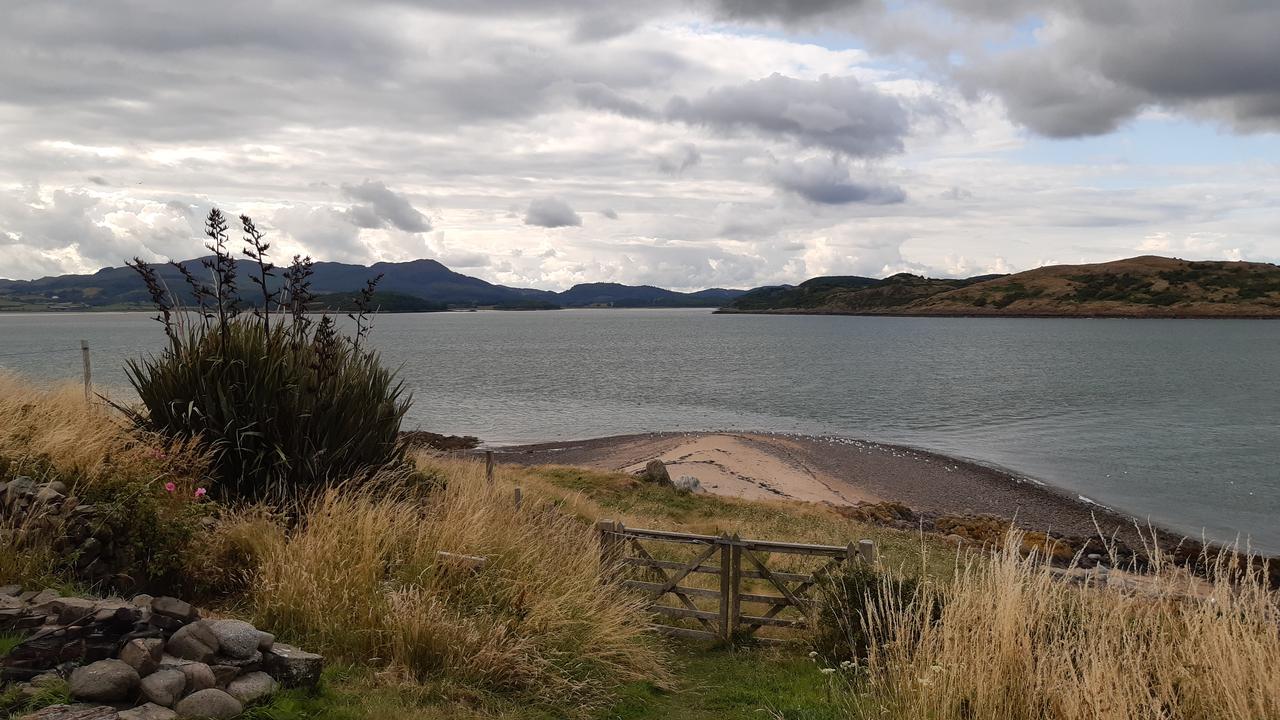
The shore around the island is another source of stimulation.
For many years, and allegedly within living memory, the island was used by smugglers. There are many caves of various sizes and some of the larger ones even have shelves cut into the rock. They also make wonderful hiding places for games of hide-and-seek with younger members of the family.
But the caves are not just a hiding place for children. Birds, bats and even the odd marten have been observed to emerge from their depths.
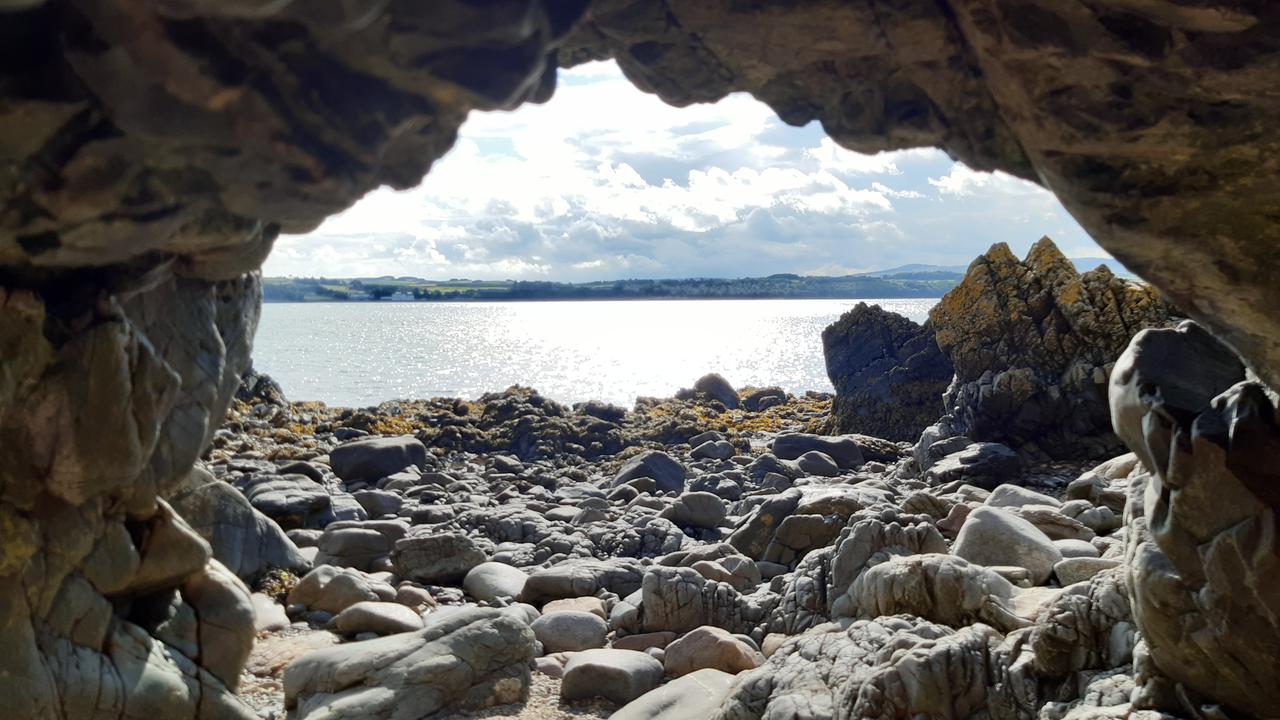
The microcosms that are rock pools are another source of fascination.
Taking the time to observe them requires patience but is often rewarded. A large lumbering human being who casts a shadow inevitably causes the creatures in such pools to skedaddle. But quiet repose results in the gradual emergence of the inhabitants and life resumes.
It's a sort of people watching, but in the wholly alien world of plump red anemones filtering whatever floats by, crabs scuttling around the place as if they're late for an important office meeting, the ponderously peripatetic quests of the many different sized winkles and the nervous darting of small fish.
When I stand up and make my presence known, it's as if the inhabitants of the pools are playing Grandmother's Footsteps (as we do back in the cottage garden)... everything suddenly stops, statue like, as if nobody wants to be noticed making a move.
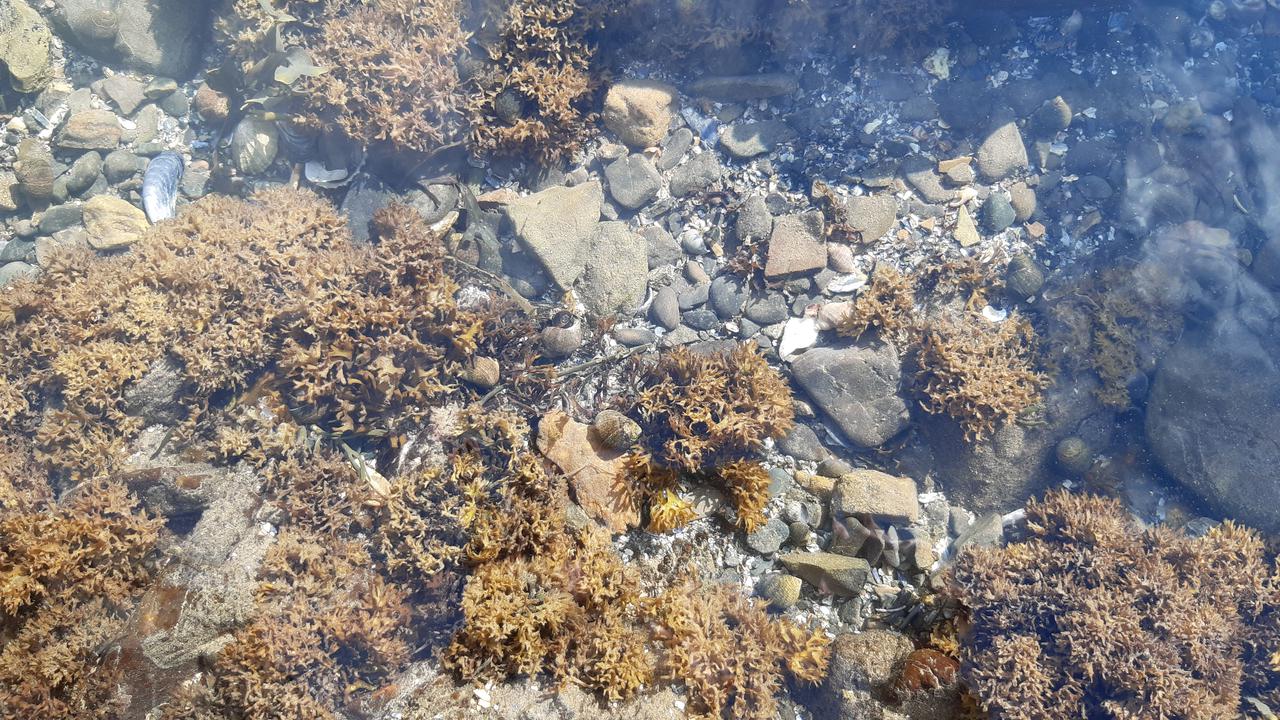
The rocky intertidal zone is also full of hidden treasure.
Closer to the sea one finds all sorts of interesting smelling seaweed and I often wonder (but always forget to try) if these fruits of the sea are edible and suitable for cooking. When I once mentioned this to the elderly fisherman who used to be the lighthouse keeper on the island, he told me the only use he'd have for the seaweed was as compost for his garden.
The rocks and pebbles are an endless source of interest. Often it's fun to play target practice and throw or skim stones. Other times one finds pebbles that have been polished in such a way that an interesting shape or colour is revealed. Sometimes we find strange flotsam or jetsam stuck in the rocks: wood collected for the fire, a deflated football, bones from a sheep, an old trainer or a dead gull are typical finds.
The flinty smell of the rocks, the sounds of birds and waves as well as the need to retain balance while carefully jumping from rock to rock mean there's a certain amount of relaxed stimulation and attention required to navigate this zone of the island - itself a rather wonderful state of mind to inhabit.
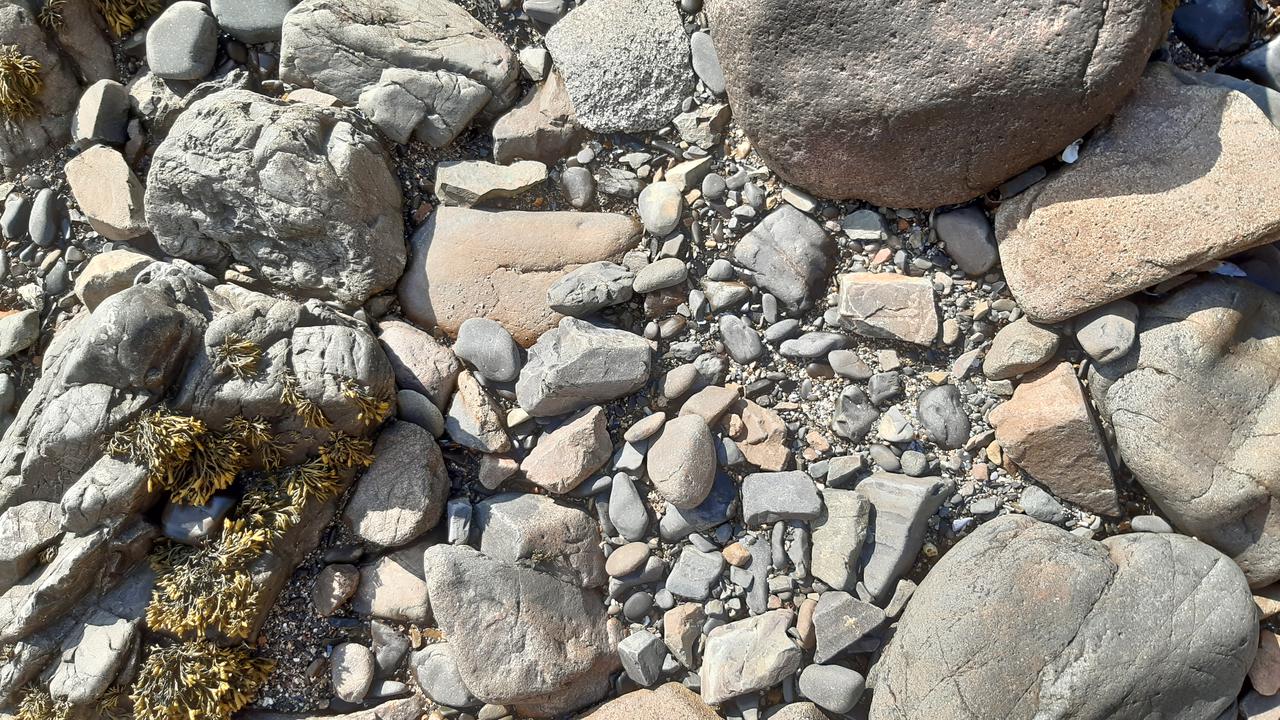
It would be remiss of me not to mention the island's most surprising inhabitant: an elephant.
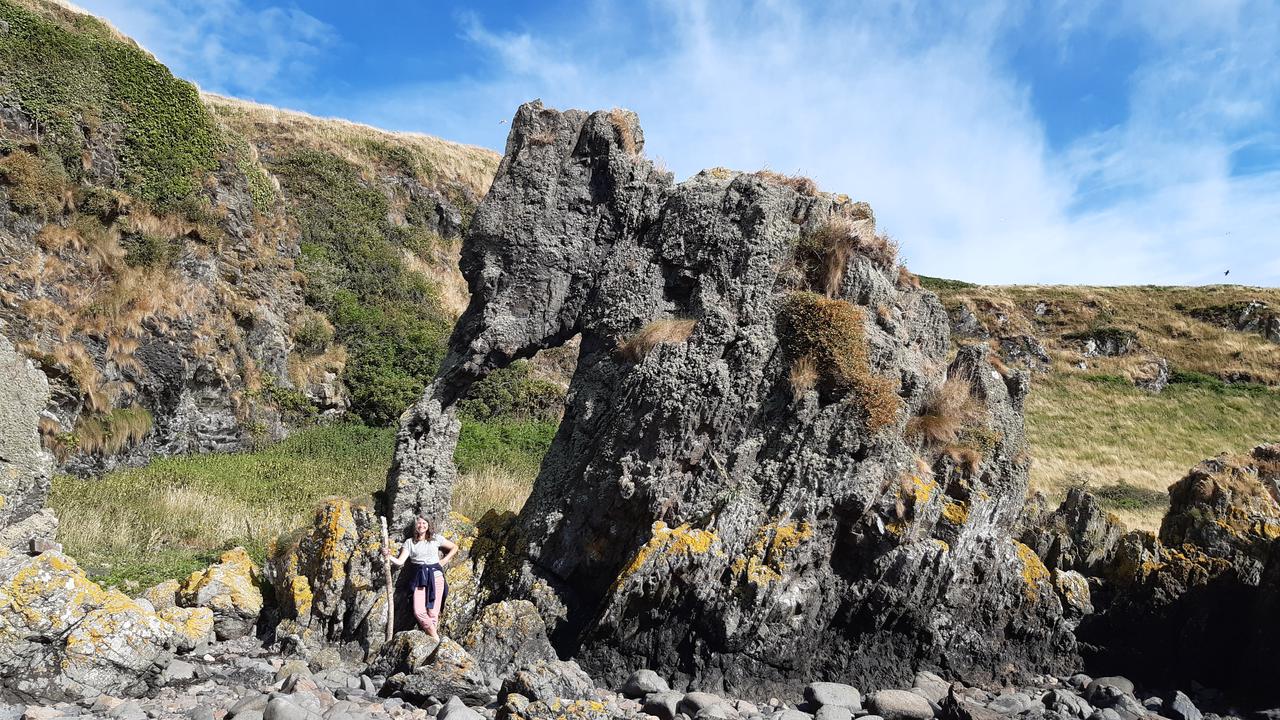
You should be able to make out Mary at the end of the elephant's trunk, and I hope you get a sense of the size and scale of this wonderful mossy mammoth. Many a time has been spent imagining ourselves as Scottish mahouts (McHouts?) journeying out of the sea on the back of such a craggy beast.
The elephant is also a favourite location for clues during many of the riddle based treasure hunts we play with younger members of the family...
My backside is washed twice a day,
With my tail playing in the spray,
It's certainly not junk,
Hiding at the end of my trunk,
Could it be a clue? Yes! Hooray!
Now that our own children are older I'm pleased to say the island still retains its magic for them. Projects, games and exploration are the order of the day. It's a special place for all of us (which makes it all the more special, because it is a shared specialness private to our family).
Here we are on the island last week, along with our long suffering, faithful and ever patient dog, Burt.
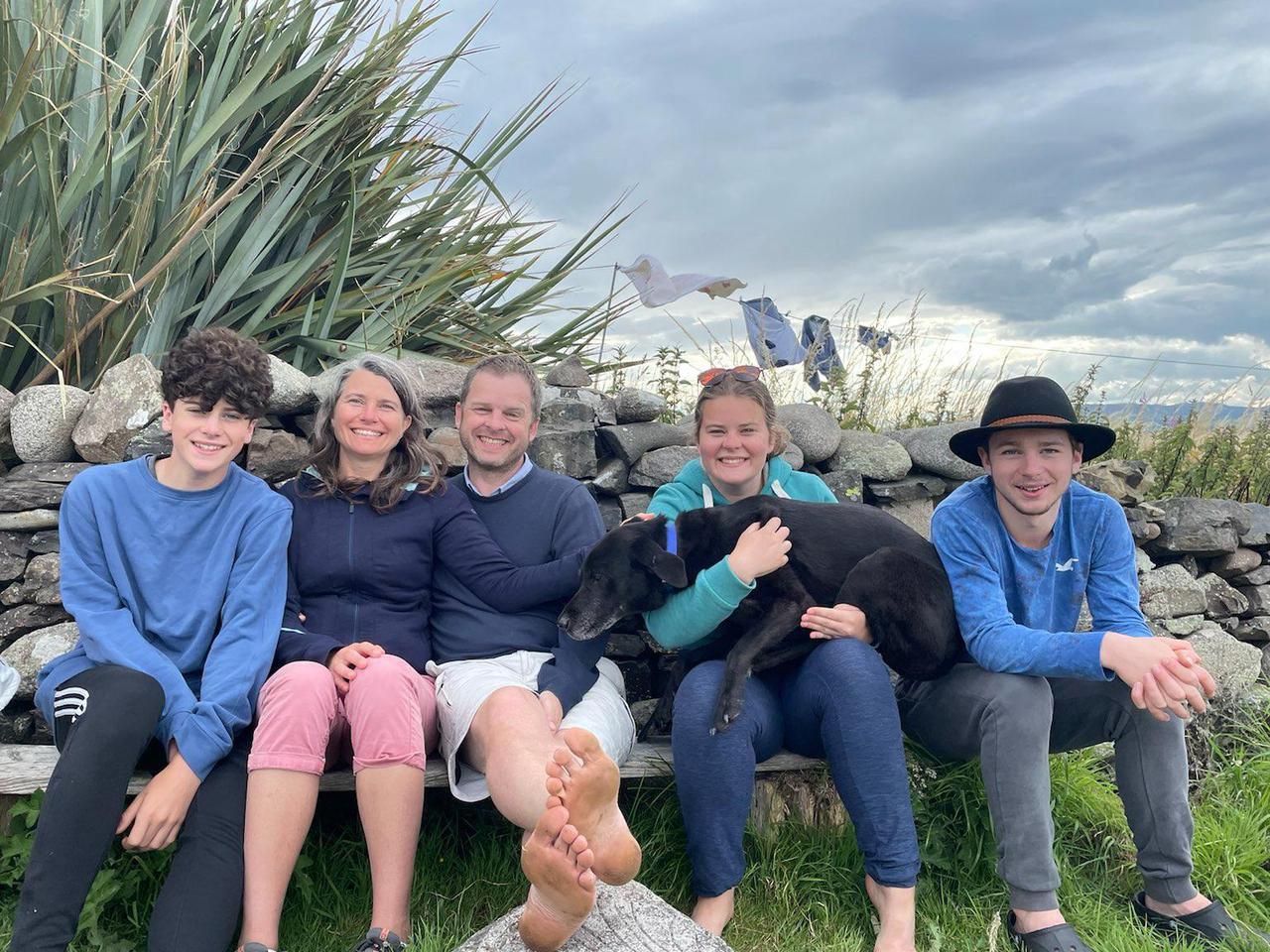
(All photographs were taken by the author in the week immediately prior to the publication of this post.)